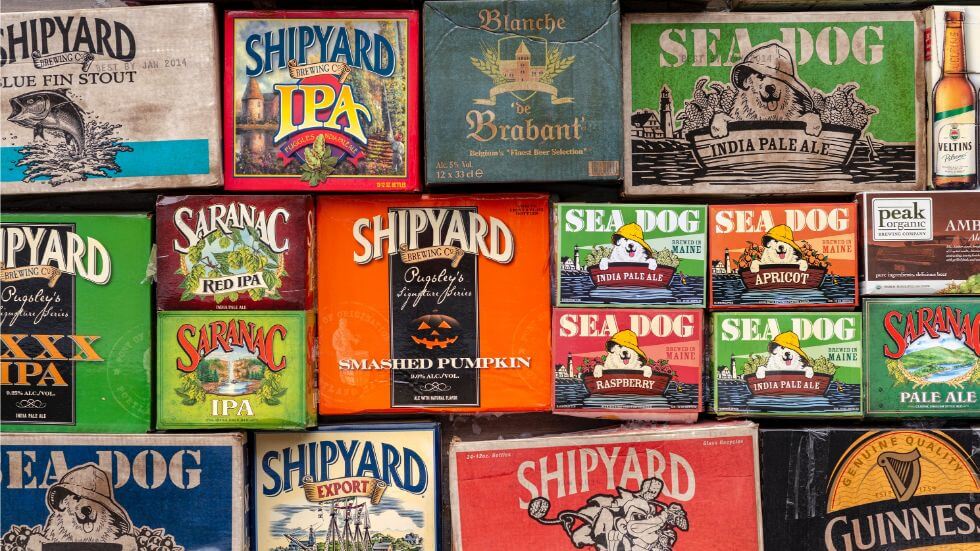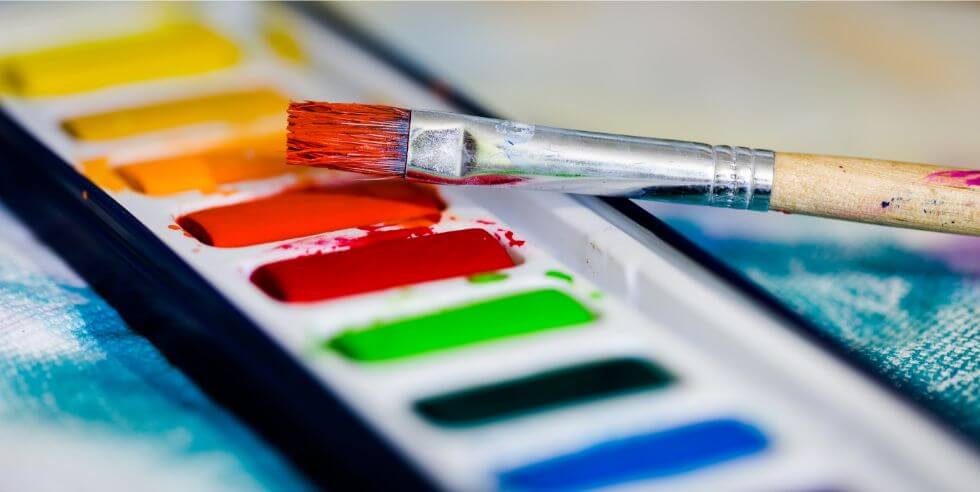Brand Identity: What is It, How to Develop A Distinct One for Your Business
Your brand identity is your distinct message to the world. It’s the key ingredient that makes you stand out from the rest of the businesses in your industry. There may be dozens of companies that offer the same services that you do in your area, but your unique identity will set you apart from the flock. A well-thought-out brand identity design is important in shaping a remarkable identity that will help your brand earn your customers’ attention.
Brand identity and developing great design are vital in creating your corporate branding. These two concepts should go hand-in-hand to establish a striking message to the world and elevate your business.
Dig deep into the basics of brand identity design and discover how you can use it as a powerful tool to attract attention and loyalty to your brand.
What is a brand identity?
In essence, brand identity is the visual component that embodies everything that a certain brand stands for. It’s a tool used to enable product recognition. For example, what do you think of when you hear the word Starbucks? Your brain automatically picks up images of coffee. In this case, Starbucks formed the brand identity for its slew of coffee products.
To increase and strengthen recall and retention, a brand identity must strive to produce consistent messaging to the audience. If you’ve decided on a certain colour palette for your corporate branding, you must always use this set of colours to maintain a uniform visual identity of your products. Your identity should fit seamlessly with the image you’re trying to project to your audience to achieve consistency. It’s important to set brand guidelines to enforce consistency whatever product or service you’re offering.
Now brand identity must not be confused with ‘brand’ and ‘branding,’ as each of the three terms refers to different meanings and contexts. Brand pertains to how your audience perceives your company, products, and services; the importance of branding your business lies in its capacity to make your business more distinctive.
To illustrate this, here’s an example.
Suppose you’re a junior high school student who just moved to a new school. You want to win new friends and be accepted in the community. But that doesn’t just happen instantly. You need to reinvent yourself and change your image to be perceived well by your peers. So you start making these changes to become the ‘cool’ guy who gets noticed and liked by many.
You start by changing your wardrobe and getting a clean and sleek haircut. Then you make sure you’re in the know of the trending memes on the internet to inject them in conversations. You enlist in clubs where the cool guys are or try out for the varsity team. And to gain the reputation of being warm and friendly, you greet anyone you meet in the hallway with a wide smile. These are some ways to build a positive image. They’re your personal branding.
All these elements (the sleek haircut, funny memes, your association with the ‘cool’ guys) make up your brand identity. Your customers will associate your brand identity with your product/service. Brand identities bridge the gap between a product and its audience. When executed well, brand identity helps spark loyalty and greater product recall.
How does brand identity design work?
A brand identity uses logos, colours, typography, messaging, and packaging that complement each other to reinforce a brand’s reputation. These aspects establish a connection with the audience by evoking emotion in them. And because it represents the emotions that a brand wants to deliver, your branding design has to clearly express the value you want to offer, be it a product or service. Image and consistency are critical factors that define the success of your branding efforts.
Designing your brand identity is the method of producing the logo, typography, colour palette, etc. for a certain brand and incorporating them together to create a cohesive message.
Below are the integral brand identity design elements and how you can develop your own eye-catching, consistent, and impactful brand identity:
1. Brand purpose and positioning
One of the basic yet essential elements of a great brand identity is a clear brand purpose and positioning. Your brand purpose is the main reason why your product exists, whilst positioning is identifying your target customers and the reasons why your product is a cut above the rest. Determining these will help you develop a brand strategy and a design process for creating your logo, colour palette, etc.
Before starting the brand-building process, you need to know deep down what makes your business a unique entity. Asking the following questions as you brainstorm with your team will help you refine your brand’s purpose:
- Why did we start this business?
- What are our values as a company?
- What do we do that anyone else can’t?
- What makes us unique/special?
- If we could sum up our brand using three words, what would they be?
- In three words, how do we want our customers to describe us?
Now take the answers to these questions to determine your brand positioning. The goal of determining your brand positioning is to get to the specifics of your purpose and set realistic expectations on how you aim to serve your customers. This process will require you to define the main customers of your product, the problems they have that you want your product to solve, the main benefits your product offers, and what makes you different from your competitor brands.
In this article, we discuss the ways businesses can embody their purpose without sacrificing profit.
2. Market research
A thorough understanding of your niche market is a requisite for a well-defined brand purpose and positioning. One way to do market research is to talk to people. You can also conduct phone interviews and online surveys to extract relevant information from the people you want to serve.
It’s also helpful to come up with buyer or customer personas to have an overview of your target customers’ inspirations, pain points, and personal traits. These details will inform how you will package your brand personality to attract customers.
For beginners, here’s a list of common questions you can consider when conducting market research:
- What are the needs of my target market that I can cater to? To answer this, it’ll be beneficial to have a firm grasp of your customers’ priorities, purchasing power, and spending habits. With these pieces of information, it’ll be simpler for you to gauge if your product matches the right market.
- Are my products/services consistent with the needs of my customers? This aims to assess the satisfaction rate of your customers with your products and services and identify existing opportunities for business.
- Are my products/services priced effectively? Knowing the current market trends and the prevailing strategies among your competitors will help ensure that you’re raking in good revenues without compromising the growth of your business.
3. Brand personality
Developing your brand personality has much to do with how you want your brand to be perceived by your audience if it were a human being. It’s important to get this clear since brand personality has a great influence on the voice and tone used in your communications and marketing materials. Without a brand personality, it will be difficult for you to create messages that your audience will appreciate, making it hard for them to relate with your brand.
If you haven’t already defined your brand personality, here’s a good exercise you might want to try: Think of any celebrity (an actor/actress, musician, athlete, etc.) that possesses the same values and traits your brand embodies. This will help you look into the various aspects of your brand personality.
Once you’ve associated your brand to a particular person, list down the attributes of that celebrity. Narrow down your list until you’re left with the attributes that best describe your brand. Then thread them together into one statement.
In developing your brand personality, it’s important to ensure that your personality appeals to your customers. Customers are more inclined to go after brands whose personality resonates with their own. Brand traits are classified into five common brand personalities including:
- Sincerity – Warmth, kindness, thoughtfulness, and appreciation of family values
- Excitement – Vibrant, carefree, youthful, and spirited
- Competence – Goal-oriented, successful, authoritative, results-driven, and influential
- Ruggedness – Adventurous, outdoorsy, athletic, tough, and rough
- Sophistication – Classy, elegant, prestigious, and in some cases, pretentious
This marketing guide discusses the nuances of each of these personalities in detail. Choose a unique personality that sets you apart from similar brands in your industry. For instance, a new travel agency wants to resonate with backpackers so the apparent choice is to weave a rugged brand personality.
But it’s likely that another travel agency has already branded itself as a travel consultant for backpackers. Instead of going that path, the travel agency can consider positioning itself by taking on the personality of sophistication. This distinguishes the brand as a travel consultant for corporate and leisure travels, which draws in a different group of clients.
4. Logo
Your logo is vital in shaping your brand identity. It establishes your audience’s first point of contact with your brand. Because it’s the one element of your brand identity design that gets the most exposure, your logo should fit well with the rest of the elements of your identity and reflect the overall emotional appeal of your brand.
A logo need not be intricate. Ideally, it should be as simple as possible; one that people can easily remember and associate with positive experiences with your brand. Logos should also be flexible so they look neat and impressive wherever you place them, whether on a gigantic billboard or on your social media graphics.
For new businesses, conceptualising a logo can get overwhelming what with all the components you have to mash up together to arrive with the final design. The first stage of the logo design process is selecting the best design aesthetic that can capture the essence of your brand.
You can choose from these style options:
- Classic – If you want to have a logo that won’t look outdated in the next couple of years, a classic style is what you need. It uses fonts, graphics, and colour palettes that are simple and elegant. It appeals to a wide spectrum of an audience as well. A classic-looking logo generally gives a brand the impression of being trustworthy and unassuming.
- Playful and quirky – This is the top choice among businesses whose focus customers are the youngsters. The playful and quirky style capitalises on cute and colourful symbols and illustrations to give off a positive and perky vibe.
- Handcrafted – The handcrafted style is for brands that want to veer away from the digital look and feel. It uses vintage inspirations and custom illustrations to create a more earthy, organic-looking, and sophisticated design.
- Vintage and retro – Brands that want to be identified with nostalgia and remind customers of happier times in the past may explore vintage and retro logo design. Vintage refers to designs and items that were produced in the past, whilst retro describes modern designs patterned after older designs. When pursuing this style, make sure to tailor the design as specific as possible to your target audience. Stay true to the fonts and colour palettes (usually brown and beige) that fall under the design’s rules. Hand-drawn illustrations also make a good fit for vintage/retro design.
- Modern and minimalist – This style is a common option for brands that want a clean, sleek, and fresh design for a modern look. It uses simple visual elements like generous amounts of white space, basic lines, and minimal colour palette. Choose the modern and minimalist style if you want your brand to have an up-to-date look and feel.
5. Colour palette
The colours used in your logo design and everything else in your brand identity are based off your colour palette. A colour palette is commonly made up of one to three primary colours. You can also pick secondary colours that work in harmony with the primary ones. Having knowledge of the range of emotions that different shades convey is key to choosing which colours end up on your palette.
Below are the main colour choices and the corresponding meanings:
- Orange – Energy and playfulness
- Yellow – Happiness, cheerfulness, accessibility, and affordability
- Red – Excitement, passion, youthfulness, and boldness
- Green – Versatility, nature, and money
- Blue – Stability, trustworthiness, acceptance, inclusivity, and universality
- Pink – Femininity, gentleness, and softness
- Purple – Royalty and luxury
- Brown – Ruggedness, outdoors, and masculinity
- Black – Modernity and sophistication
When choosing your colour palette, consider how well the colours will appear on print or online. This should be consistent across all your marketing and collateral media as you convert an image from your digital screen to actual pages. More on colour modes and methods on this article.
6. Typography
To complete your brand identity design, pick the right font that blends well with your colours and logo and is easy to recognize. There are different kinds of typefaces and each of them carries its own personality and character. Professional designers can help you find the right typeface that fits your brand. It’s important to select the right font as poor font choice can lead to a wrong interpretation of the message and it can interfere with the purpose of the visual.
These are the major types of fonts:
- Serif fonts – These fonts are characterised by their ‘tiny feet’ or anchor on the end of each letter. Known as classic typography, serif fonts are the best choice if you’d like your brand to be perceived as conventional, trustworthy, and leaning towards old school design. Common serif fonts are Times New Roman and Freight Text.
- Sans serif – On the other hand, sans serif fonts are letters with smooth edges, unlike serif fonts. Fonts like Gotham and Futura provide brands with a sleeker, more modernised appearance.
- Display fonts – A more expressive typography, display fonts are known for their unique letter shapes, outlines, and shadowing. They’re great for making bold statements and for brands that want to leave an unforgettable impression on their audience.
- Script typography – This typography looks similar to cursive handwriting. Examples of this font are Pacifico and Allura which gives off a feminine or luxurious vibe to a brand.
Branding Identity Tips for Small Businesses
After laying the foundations of your design, the next thing to do is to tap a professional designer to translate your brand identity into tangible design materials. These materials come in a number of assets which you can use for your marketing and promotions. Explore these assets and know which ones are important and relevant to the nature of your business:
- Logo – Make sure your logo captures your values and who you are as a brand. A great logo follows design concepts popular within the industry where the business belongs, doesn’t instantly go out of style, and leaves a lasting impression to the audience. Get started with these four reminders for designing a winning logo.
- Product packaging – All physical products need a distinct, attention-grabbing packaging to draw the interest and curiosity of the customers. Be it the pouch for locally-sourced coffee beans, or the mailer box you use to send your products to customers who bought from your online store, a great package design contributes to a positive brand experience. A well-designed packaging not only reinforces your brand identity, but it also promotes customer loyalty.
- Website – Every modern business needs a functional website. It’s an important brand identity asset that represents your brand in the digital space. Websites are imperative for businesses that offer digital products/services. An information-packed, well-designed website should showcase your brand identity through design aesthetics and user experience.
- Business cards – Establishing a positive opinion before potential clients at first meeting is essential and what better way to create a good impression than handing out a well-designed business card. Keep your card design simple. It should have your company logo and complete personal details.
- Email design – Email is an indispensable tool for engaging and connecting with your customers. One of the challenges of using email marketing though is making your message relevant and useful for it not to get lost in the clutter or junked. The key is to have a good design strategy and format. Keep your emails short, simple, scannable, and easy to read. You can throw in some images or GIFs to make it more engaging.
Bottomline
Your brand identity is your personal story. It’s what asserts your uniqueness and invites the audience to get to know your brand. Well-Thought-Out brand identity makes you stand out from the competition and the more distinct you set your brand to be, the more likely you are to leave a lasting impression on your customers’ mind. In shaping your brand identity, it’s essential to create designs that showcase your story and the value you offer to the world.
Getting into the process of designing a brand identity requires the expertise of experienced brand designers. When you need a skilled hand to guide you in translating your story into a powerful brand identity the audience will love and remember, Rooland is here for you. Contact us anytime for a wide range of brand identity design services.











